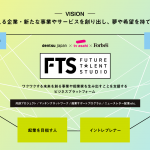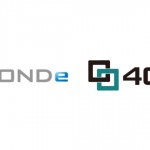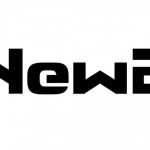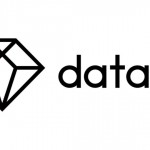impressionの価値について今一度考えてみる
The UK real-time bidding (RTB) industry has gone from 1% of total online ad spend in 2010 to a predicted 12% this year (IDC). This is impressive growth, but there is one element of online, brand spend, where RTB adoption is being hampered by a lack of foresight. Brand managers are more used to looking at the big-picture, but we need them to focus down to a single online ad. However in doing this the fundamental measurement of the industry, the “impression”, is standing in the way.
In a blog post at the start of 2011, I commented that a measurement of viewability was fundamental in understanding how online advertising influences the user. Whilst I was a little premature in the prediction that 2011 was going to be the year of new metrics, it is nice to see that viewability is finally getting the recognition that has been needed for a long time. True to the original post, I have been dismayed by the slow progress of implementation and moreover by the lack of adoption of additional, enhanced metrics.
While the technology to create these metrics has been around for a good few years now, the fact it has not made more of an impact has hindered online brand spend. In reality the impression as it stands needs to be replaced with something more representative of the benefit to advertisers. Selling space based on how many times an advert is called and not displayed is counter to rational marketing measurement. This is an issue which should have been fixed by now.
The IAB is therefore to be applauded for its 3MS initiative and giving guidance as to what counts as “viewable”. Despite the definition of at least 50% of the ad being viewable for one second or more being possibly too small, we finally have a line drawn in the sand that should improve the state of inventory in the long tail. Stories of ads being loaded on top of each other or at the bottom of huge lists of content still abound and it is these sites that should rightfully lose out due to this shift from ad call to ad delivery. Back in March, Mark Hughes from C3 metrics echoed these thoughts and what will happen to the state of inventory once this standard has had time to settle in.
But where do we go from here? If one second is not enough, what is? The real answer for how long is long enough is highly dependent on the creative and the product/brand being advertised. For direct response (DR) campaigns, the cost of assessing the impact of each combination would weaken the cost efficiencies gained from serving the more impactful ads. Instead, the number of seconds an ad is viewed should be added as a parameter to the standard automated DR optimisation algorithm that companies employ, allowing them to target the sites most likely to display the ads for enough time to make them impactful. This should also reduce the possibility of “gaming” the system as can happen with standard post view conversion attribution.
Viewability isn’t the whole story, though. In my earlier post, I talked of the click being replaced with a true “engagement” metric, in theory being powered by all the new dynamic creative companies. This has not really happened and part of the problem is the fact that engagements, like viewability are more complex than the click metrics they seek to replace. True engagements require much more thought about the creative and given the average budget spent on DR creative, working hard to make creative more engaging is probably too costly. Instead, the social space seems to be coming to the rescue. By creating adverts that look less like adverts and more like actions your friends have carried out, social campaigns make you much more likely to pay attention and engage with them. While these ads appear to be restricted to Facebook for now, it’s not too hard to imagine a 300×250 advert telling you a friend has just bought a new pair of Nike trainers or taken a test drive in a BMW M3 in the not too distant future. Engagements will therefore probably still be measured by the humble click, but we will see social advertising merging with display to drive an increase in ad clickability.
It is interesting to see the leading players taking action with measurement. Google is already adding the viewable impression metric (based on the IAB definition) to its reporting tools which should do a lot for driving the standard forward. Facebook too, conscious that it could lose out on viewability, has upped the ante by defining metrics such as social reach, social impressions and social clicks, indicating how much performance is being driven by your target audience’s social connections. Normally I am unconvinced by these sorts of unilateral decisions from dominant companies, but these standards make sense and should usher in a new wave of performance DR advertising based on real ad views and engagements.
So where does this leave brand campaigns? Given that viewability and engagement should be the very same metrics that dictate good versus bad branding, the lack of involvement from this side of the industry is perplexing. The truth is that a typical brand manager is less focussed on measureable metrics and more focussed on producing large-scale product experiences. However, with the economic slowdown persisting, producing expensive brand experiences with little accountability, based on a feel-good factor is going to come under pressure. Proper, inexpensive, large-scale brand effectiveness measurement has the potential to disrupt the industry by providing the framework for any company to run cheap tests of brand creative and message with tens of thousands of people across the web. This will require brand managers to have new skills that combine a visionary mind-set with the analytical abilities of an expert. A bit of an ask, perhaps, but the benefits of being able to define and disseminate new branding campaigns for a fraction of the cost of existing ones is a compelling motivation.
Despite the slow adoption of the technologies required to define the new measurement metrics so desperately required in the online advertising space, it does feel like the industry is finally coming of age. The viewability standard is a validation of the belief that the impression needs to be retired and as social becomes more integrated with standard advertising we will see clicks being more reliably associated with true engagements. This, in turn, will provide more reliable measurements for attribution modelling, allowing better optimisation models to be developed that are more customised to suit individual advertiser needs. Ultimately we are on the cusp of developing an end to end solution for making brand spend online not just feasible, but essential.
Daniel de Sybel is director of technology and operations at Infectious Media.












